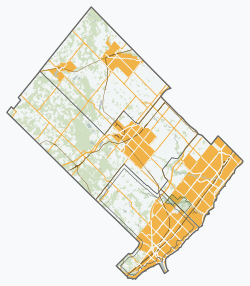Limehouse | |
|---|---|
Unincorporated community | |
 Memorial Hall | |
| Coordinates: 43°38′11″N79°58′46″W / 43.63639°N 79.97944°W | |
| Country | Canada |
| Province | Ontario |
| Regional municipality | Halton |
| Town | Halton Hills |
| Time zone | UTC−05:00 (EST) |
| • Summer (DST) | UTC−04:00 (EDT) |
| Forward sortation area | |
| Area codes | 905 and 289 |
| NTS Map | 030M12 |
| GNBC Code | FBXQM |
Limehouse is a community in the Town of Halton Hills in southern Ontario, Canada. It has a population of about 800 people and its closest neighbours are Georgetown and Acton. Limehouse has many hills, trails and even a small school.

